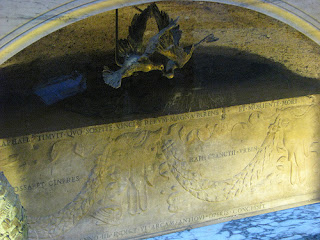Raffaello Sanzio is one of the most important artists of the Renaissance period. Born in Urbino, in the Marche region, in 1483, he was painter and architect and he was among the most requested and famous ones of his time. He came to Rome in 1508, at the age of just 25, the same year when Michelangelo started painting the ceiling of the Sistine Chapel. As first commission he had to paint the private rooms of the pope Julius II in the Vatican. Since then his activity in Rome never stopped and he realised plenty of masterpieces. He died very young at the age of 37, allegedly, according to Vasari, because of "love excesses". He was buried in the Pantheon and his shrine reports a very nice sentence in latin: "Ille hic est Raphael timuit quo sospite vinci rerum magna parens et moriente mori" : here lies that famous Raphael by whom Nature feared to be conquered while he lived, and when he was dying, feared herself to die.
Wednesday, 29 September 2010
Sunday, 12 September 2010
The School of Athens by Raphael
The School of Athens is one of the frescos which decorates the Room of the Signatura, one of the four rooms depicted by Raphael in the Vatican. Pope Julius II commissioned this fresco which was realised between 1508 and 1511. This work represents the most brilliant ancient philosophers and mathematicians talking one another inside an imaginary classic building. The perspective of the building is magnificently painted and the vanishing point is in the center of the fresco between the heads of the two most prominent philosophers of the ancient Greece, Plato (the one on the left, maybe his face is a portrait of Leonardo da Vinci) and Aristotle (on the right). Plato points to the sky, gesture which recalls his doctrine according to which our world is just a copy of an ideal and superior world up in the sky; Aristotle, with his arm stretched in front of him, wants to remind us that the only possible reality is the one where we live. The superb building recalls the project of the new Saint Peter whose construction started just few years before. Numerous are the people whose faces have been identified although there cannot be certainty on all of them. The figure inside the red circle is Raphael who wanted to portray himself among the greatest minds of the antiquity.
Subscribe to:
Comments (Atom)

